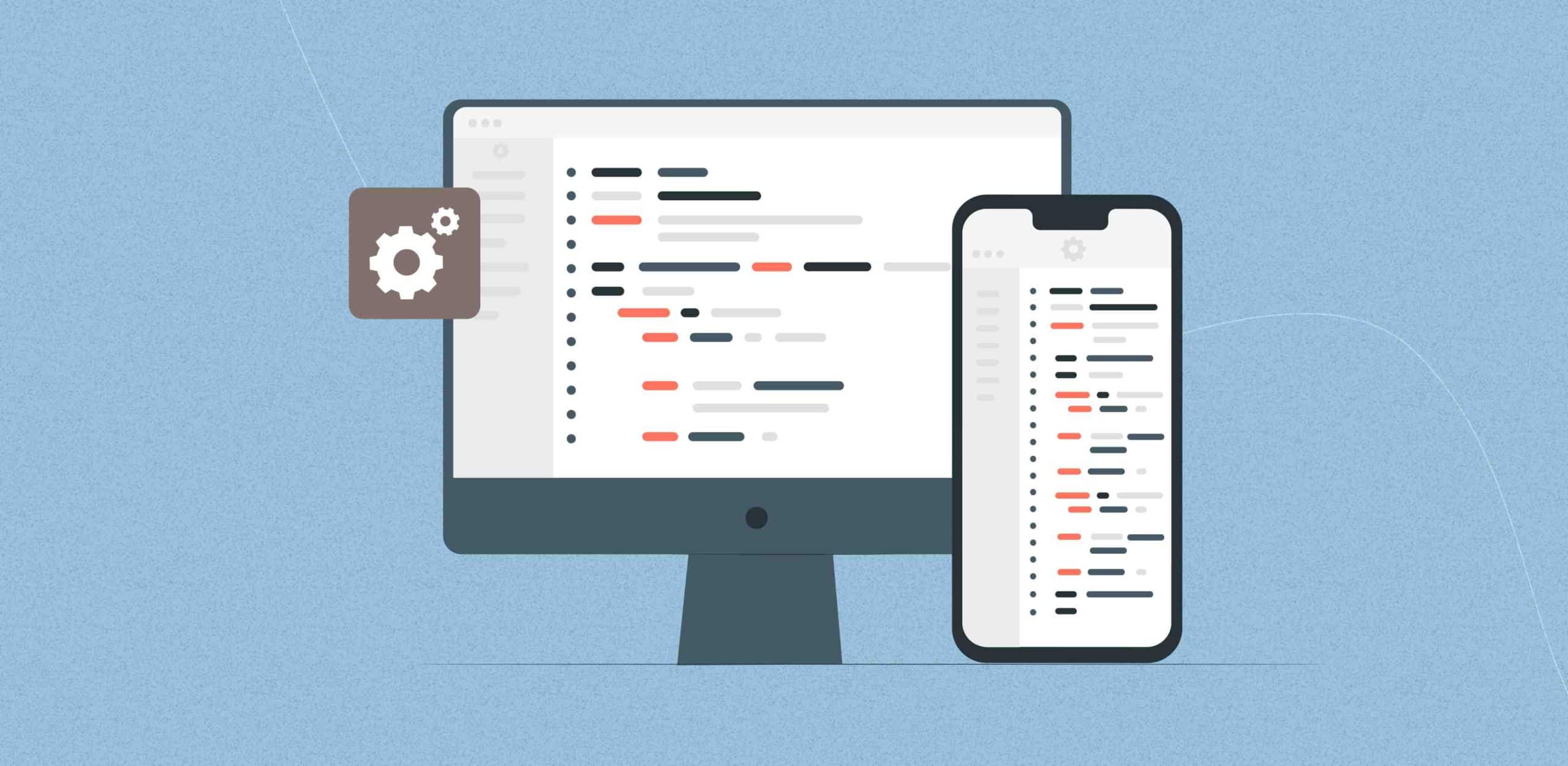Introduction
Full-Stack AI Development Services are emerging as the cornerstone for enterprises striving to stay competitive in 2025. The business landscape has become more data-driven, faster, and increasingly reliant on intelligent systems. Today, organizations are no longer asking “Should we adopt AI?” but rather “How do we scale AI effectively across every layer of our operations?”
From predictive analytics to generative AI, artificial intelligence has already evolved beyond pilot projects and experimental use cases. It now serves as the backbone of enterprise transformation. However, many businesses still face challenges with fragmented AI initiatives that fail to integrate seamlessly into core processes. This is where full-stack AI development services prove to be mission-critical.
Unlike isolated AI tools, full-stack AI unifies data engineering, machine learning models, application integration, and secure infrastructure into a single, cohesive ecosystem. The outcome is clear: faster innovation, higher efficiency, and a sustainable competitive advantage in an increasingly demanding global market.
Accelerate your journey with full-stack AI development—start building smarter solutions today.
What Are Full-Stack AI Development Services?
Full-stack AI development services are comprehensive, end-to-end solutions that cover every stage of the AI lifecycle—from raw data collection to seamless business integration. Unlike fragmented AI projects that focus only on building models, full-stack AI takes a holistic approach by ensuring that data, models, applications, and infrastructure all work together in one unified ecosystem.
This approach allows enterprises to move beyond experiments and proofs of concept and build AI systems that are scalable, secure, and business-ready. Let’s break down the four critical layers that define full-stack AI development:
- Data Layer: The Foundation of AI Success
Every AI initiative begins with data, but most organizations struggle with data silos, poor quality, or inconsistent formats. In the data layer, full-stack AI services focus on:
- Data Collection: Pulling structured and unstructured data from multiple sources such as IoT devices, ERP systems, CRMs, and customer interactions.
- Data Cleaning & Transformation: Removing duplicates, handling missing values, and preparing datasets for accurate model training.
- Data Pipelines & Management: Automating the flow of data from source to storage through pipelines, data lakes, and warehouses.
Without this solid foundation, AI models cannot deliver reliable results.
- Model Layer: Turning Data Into Intelligence
Once the data is ready, the next step is building and training AI models. The model layer covers:
- Machine Learning & Deep Learning Models: Algorithms for prediction, classification, clustering, and recommendation.
- Generative AI Models: Language models, computer vision, and generative design tools for advanced use cases.
- Optimization & Validation: Tuning hyperparameters, detecting bias, and validating models to ensure fairness and accuracy.
This layer transforms raw data into actionable insights—but on its own, it’s not enough.
- Application Layer: Bringing AI Into the Business
The true value of AI emerges when it’s embedded directly into enterprise applications and workflows. At this stage, full-stack AI services focus on:
- App & API Integration: Embedding AI features into customer-facing applications, dashboards, and backend systems.
- Business Workflow Automation: Using AI to automate repetitive tasks, speed up decision-making, and personalize customer experiences.
- User Experience Enhancement: Delivering real-time recommendations, personalized interactions, and predictive alerts.
This ensures that AI is not just a lab experiment but a tangible driver of business outcomes.
- Infrastructure Layer: Scaling AI With Security and Reliability
Even the best models and apps can fail if they don’t run on a secure, scalable foundation. That’s where the infrastructure layer comes in:
- Cloud-Native Deployment: Leveraging AWS, Azure, GCP, or hybrid clouds for global scalability.
- MLOps & DevOps Pipelines: Streamlining continuous integration, deployment, and monitoring of AI models.
- Security & Compliance: Ensuring enterprise AI services meet GDPR, HIPAA, SOC 2, and other industry standards
- Monitoring & Governance: Tracking performance, detecting drift, and maintaining AI accountability over time.
This layer guarantees that AI solutions can grow with the business while remaining compliant and cost-efficient.
Why a Holistic Approach Matters?
Most enterprises fall into the trap of siloed AI development—where data engineers, data scientists, and IT teams work separately without alignment. The result is delays, inefficiencies, and projects that never reach production.
With full-stack AI development, enterprises eliminate these silos and achieve:
- Seamless collaboration across teams
- Faster innovation cycles
- AI projects that deliver real-world value, not just prototypes
Example: Fraud Detection in Banking
Consider a bank that wants to reduce credit card fraud.
- Without full-stack AI: The data science team may build a model, but it never moves beyond a demo because the infrastructure team can’t scale it or compliance requirements aren’t met.
- With full-stack AI: Data is collected from transaction streams, cleaned, and pipelined. A fraud detection model is trained and optimized. The model is then embedded into the bank’s mobile app in real time, automatically blocking suspicious transactions. Meanwhile, compliance checks and monitoring tools ensure the system is secure and reliable.
This end-to-end coverage is what makes full-stack AI development services indispensable for enterprises in 2025.
Accelerate your journey with full-stack AI development—start building smarter solutions today.
Why AI Alone Is Not Enough in 2025?
Many enterprises still assume that hiring a few data scientists or building a single AI model is enough to gain a competitive edge. While this mindset may have worked during the early phases of AI adoption, the business environment in 2025 demands far more. The reality is that isolated AI experiments rarely deliver long-term value. Without the right ecosystem around them, they fail to scale, underperform, or simply remain unused.
To stay competitive, enterprises need to go beyond the buzzword of “AI adoption” and embrace full-stack AI development—an approach that integrates data engineering, infrastructure, application development, and compliance into a unified framework. Here’s why AI alone will no longer cut it in 2025:
Data Explosion Requires Engineering
We live in an era where data is the new fuel, but raw data alone is useless without proper refinement. With billions of IoT devices, connected platforms, and digital interactions happening every second, enterprises are producing petabytes of structured and unstructured data every day.
The challenge lies in making this data usable for AI. Poor-quality or ungoverned data leads to inaccurate models, flawed predictions, and biased outcomes. In fact, studies show that up to 80% of AI project failures stem from inadequate data pipelines.
This is why data engineering and governance are as important as the models themselves. Enterprises need robust systems for:
- Real-time data collection and ingestion.
- Cleaning, labeling, and enriching raw data.
- Storing and retrieving data securely at scale.
- Applying governance frameworks to maintain accuracy and compliance.
Without these foundations, even the most advanced AI models will “starve” from lack of usable inputs.
Scaling AI Beyond Pilots
Launching an AI proof-of-concept—whether it’s a customer support chatbot or a fraud detection tool—can impress stakeholders. But making that same solution usable by millions of customers worldwide is an entirely different challenge.
Scaling AI involves much more than increasing server capacity. Enterprises need AI-ready infrastructure and MLOps pipelines that ensure models:
- Are continuously monitored for accuracy and drift.
- Can be retrained automatically with fresh data.
- Handle peak traffic loads without downtime.
- Integrate with enterprise-wide DevOps systems for rapid deployment.
Without this, enterprises risk creating a “graveyard of pilots”—projects that look good in demos but never reach production. In 2025, robust infrastructure and scalable deployment strategies are the difference between AI experiments and enterprise-wide transformation.
Integration Is the Key to Adoption
AI delivers value only when it’s embedded directly into the systems where business happens. If models stay siloed in the lab or on a dashboard no one uses, they won’t generate ROI.
True adoption requires that AI seamlessly integrates into:
- Enterprise applications (ERP, CRM, HR platforms).
- Customer touchpoints (mobile apps, chatbots, digital kiosks).
- Employee workflows (decision-support tools, automation dashboards).
For example, a recommendation engine is only valuable if it plugs directly into an eCommerce platform to drive real-time suggestions. A fraud detection algorithm only makes an impact when it is integrated into payment gateways, blocking transactions as they occur.
Isolated AI models = low adoption. Integrated AI ecosystems = business transformation.
Security, Ethics, and Compliance
As AI adoption accelerates, so do concerns around data privacy, algorithmic bias, and regulatory compliance. In 2025, enterprises face not just technical expectations but also ethical and legal accountability.
Global regulations such as GDPR (Europe), HIPAA (healthcare in the U.S.), SOC 2 (data security), and AI-specific governance frameworks demand that AI systems be:
- Explainable – Enterprises must be able to justify how AI reaches its decisions.
- Auditable – Every decision must be traceable for compliance.
- Secure – Sensitive data must be protected against breaches and misuse.
- Ethical – Bias and unfair practices must be eliminated.
Without a full-stack approach, enterprises risk deploying AI systems that may be powerful, but non-compliant or even harmful. The cost of non-compliance—both financial and reputational—is too high to ignore.
How Enterprise Businesses Benefit from Custom Generative AI Solutions? Click to Read.
Key Benefits of Full-Stack AI Development Services for Enterprises in 2025
Adopting full-stack AI development services is no longer just about staying up to date with technology—it’s about creating measurable business value. Enterprises that embrace end-to-end AI gain advantages across speed, cost, scalability, ROI, and long-term competitiveness. Let’s explore the key benefits in detail.
Faster Time-to-Market
In today’s fast-moving business environment, speed often defines success. Traditional AI projects are slowed down by fragmented workflows, where data engineers, data scientists, and IT teams work in silos. This lack of coordination can stretch development timelines from months to years.
Full-stack AI development eliminates these barriers. By aligning data, models, applications, and infrastructure under a unified strategy, enterprises accelerate development cycles dramatically. New AI-powered solutions—such as chatbots, fraud detection systems, or recommendation engines—can move from concept to deployment in weeks, not months.
This agility is especially critical in industries like retail and finance, where customer expectations and market conditions shift overnight. Faster launches mean quicker value delivery, stronger customer engagement, and staying ahead of competitors.
Cost Efficiency
Managing multiple vendors for different aspects of AI—data pipelines, cloud infrastructure, model development, and front-end integration—quickly becomes expensive and inefficient. Not only do costs rise, but communication gaps between vendors often lead to project delays and misaligned outcomes.
With full-stack AI development services, enterprises consolidate everything under one roof. A single partner provides end-to-end enterprise AI services, reducing the overhead of managing separate contracts, licenses, and tools. The result is a streamlined investment strategy where budgets go further, and resources are allocated more efficiently.
Moreover, the cost savings extend beyond initial deployment. Unified monitoring, DevOps for AI (MLOps), and cloud-native infrastructure reduce long-term maintenance costs while ensuring AI solutions remain reliable and scalable.
Scalability and Future-Readiness
AI technology in 2025 is evolving at breakneck speed. Generative AI, edge AI, and hyper-personalized customer experiences are already reshaping industries. Enterprises that build isolated AI models today risk being stuck with legacy systems tomorrow.
Full-stack AI systems are designed for the future. They are:
- Cloud-Agnostic: Deployable across AWS, Azure, GCP, or hybrid environments without vendor lock-in.
- Modular: Components can be upgraded, swapped, or extended as new technologies emerge.
- Future-Proof: Built with scalability in mind, ensuring systems can handle growing datasets and user bases.
This future-readiness ensures enterprises don’t have to start from scratch every time a new AI trend surfaces. Instead, they can adapt quickly while maintaining consistency and compliance across the organization.
Higher ROI on AI Investments
One of the biggest frustrations enterprise leaders face is AI projects stuck in pilot mode. They look promising in labs but never scale to enterprise-wide adoption. As a result, ROI remains low, and stakeholders lose confidence.
With full-stack AI development, organizations break this cycle. AI is deployed across multiple departments—sales, marketing, operations, HR, customer service—ensuring solutions deliver measurable outcomes. For instance:
- Sales teams benefit from predictive lead scoring.
- Marketing gains real-time personalization and campaign optimization.
- Operations leverage AI for demand forecasting and resource planning.
- HR automates talent acquisition and employee engagement insights.
- Customer Service delivers faster resolutions with AI-powered chatbots.
The ability to scale AI across the enterprise ensures that investments don’t just produce insights—they generate tangible business results and long-term value.
Competitive Advantage
In industries where milliseconds matter, AI-driven decisions can make or break success. Consider:
- Finance: Detecting fraud in real time saves millions in potential losses.
- Healthcare: AI-assisted diagnostics accelerate patient care and improve outcomes.
- Retail: Dynamic pricing and personalized recommendations boost customer loyalty.
Enterprises equipped with full-stack AI development services gain a sustainable competitive edge. They’re not just reacting to market changes—they’re anticipating them. Competitors still relying on siloed AI efforts will find it increasingly difficult to keep up with AI-first organizations that can innovate faster, operate leaner, and serve customers better.
What are Full-Stack AI Development Service Industry Use Cases?
Adopting full-stack AI development services is no longer just about staying up to date with technology—it’s about creating measurable business value. Enterprises that embrace end-to-end AI gain advantages across speed, cost, scalability, ROI, and long-term competitiveness. Let’s explore the key benefits in detail.
Faster Time-to-Market
In today’s fast-moving business environment, speed often defines success. Traditional AI projects are slowed down by fragmented workflows, where data engineers, data scientists, and IT teams work in silos. This lack of coordination can stretch development timelines from months to years.
Full-stack AI development eliminates these barriers. By aligning data, models, applications, and infrastructure under a unified strategy, enterprises accelerate development cycles dramatically. New AI-powered solutions—such as chatbots, fraud detection systems, or recommendation engines—can move from concept to deployment in weeks, not months.
This agility is especially critical in industries like retail and finance, where customer expectations and market conditions shift overnight. Faster launches mean quicker value delivery, stronger customer engagement, and staying ahead of competitors.
Cost Efficiency
Managing multiple vendors for different aspects of AI—data pipelines, cloud infrastructure, model development, and front-end integration—quickly becomes expensive and inefficient. Not only do costs rise, but communication gaps between vendors often lead to project delays and misaligned outcomes.
With full-stack AI development services, enterprises consolidate everything under one roof. A single partner provides end-to-end enterprise AI services, reducing the overhead of managing separate contracts, licenses, and tools. The result is a streamlined investment strategy where budgets go further, and resources are allocated more efficiently.
Moreover, the cost savings extend beyond initial deployment. Unified monitoring, DevOps for AI (MLOps), and cloud-native infrastructure reduce long-term maintenance costs while ensuring AI solutions remain reliable and scalable.
Scalability and Future-Readiness
AI technology in 2025 is evolving at breakneck speed. Generative AI, edge AI, and hyper-personalized customer experiences are already reshaping industries. Enterprises that build isolated AI models today risk being stuck with legacy systems tomorrow.
Full-stack AI systems are designed for the future. They are:
- Cloud-Agnostic: Deployable across AWS, Azure, GCP, or hybrid environments without vendor lock-in.
- Modular: Components can be upgraded, swapped, or extended as new technologies emerge.
- Future-Proof: Built with scalability in mind, ensuring systems can handle growing datasets and user bases.
This future-readiness ensures enterprises don’t have to start from scratch every time a new AI trend surfaces. Instead, they can adapt quickly while maintaining consistency and compliance across the organization.
Higher ROI on AI Investments
One of the biggest frustrations enterprise leaders face is AI projects stuck in pilot mode. They look promising in labs but never scale to enterprise-wide adoption. As a result, ROI remains low, and stakeholders lose confidence.
With full-stack AI development, organizations break this cycle. AI is deployed across multiple departments—sales, marketing, operations, HR, customer service—ensuring solutions deliver measurable outcomes. For instance:
- Sales teams benefit from predictive lead scoring.
- Marketing gains real-time personalization and campaign optimization.
- Operations leverage AI for demand forecasting and resource planning.
- HR automates talent acquisition and employee engagement insights.
- Customer Service delivers faster resolutions with AI-powered chatbots.
The ability to scale AI across the enterprise ensures that investments don’t just produce insights—they generate tangible business results and long-term value.
Competitive Advantage
In industries where milliseconds matter, AI-driven decisions can make or break success. Consider:
- Finance: Detecting fraud in real time saves millions in potential losses.
- Healthcare: AI-assisted diagnostics accelerate patient care and improve outcomes.
- Retail: Dynamic pricing and personalized recommendations boost customer loyalty.
Enterprises equipped with full-stack AI development services gain a sustainable competitive edge. They’re not just reacting to market changes—they’re anticipating them. Competitors still relying on siloed AI efforts will find it increasingly difficult to keep up with AI-first organizations that can innovate faster, operate leaner, and serve customers better.
Challenges Enterprises Face Without Full-Stack AI Development Services
While enterprises are eager to harness the power of artificial intelligence, many find themselves struggling to translate vision into measurable outcomes. The root cause often lies in the absence of a full-stack AI development approach. Without a unified strategy that combines data, models, applications, and infrastructure, businesses encounter significant roadblocks that limit scalability and ROI.
Skill Gaps and Overdependence on Data Scientists
Most enterprises begin their AI journey by hiring a small team of data scientists. While these professionals are skilled at building machine learning models, they typically lack expertise in other critical areas such as MLOps, cloud infrastructure, and application integration. The result? AI projects get stuck in silos, unable to move beyond experimentation. Enterprises soon discover that without end-to-end AI expertise, their solutions never reach production environments where they can deliver true business value.
Integration Bottlenecks That Stall Adoption
An AI model in a research lab has little impact until it is deployed into real-world workflows. Many enterprises face integration challenges, where AI systems do not connect smoothly with existing applications, CRMs, ERPs, or customer-facing platforms. For example, a retail company might build a recommendation model but fail to integrate it into its eCommerce platform in real time. This disconnect means employees and customers never experience the benefits of AI, leading to poor adoption and frustration.
Security and Compliance Risks
In 2025, enterprises are under mounting pressure to comply with strict data privacy laws (GDPR, HIPAA, CCPA, and industry-specific regulations). Deploying AI models without proper governance can result in data breaches, misuse of sensitive information, or non-compliance penalties. Moreover, explainability and transparency are now essential. Without enterprise AI services that prioritize security and regulatory alignment, organizations risk damaging their reputation and facing costly legal consequences.
High Costs with Low ROI
One of the biggest challenges enterprises face is wasted investment. AI projects are often launched with enthusiasm but stall midway due to lack of planning, poor infrastructure, or limited scalability. This leads to high development costs without tangible business outcomes. For example, a financial firm might spend millions on a fraud detection model only to find it underperforms in production because data pipelines were not properly built. Without full-stack AI development services, organizations risk investing heavily in AI experiments that never deliver meaningful returns.
Why Many AI Projects Fail to Scale
These challenges explain why studies consistently show that a majority of enterprise AI initiatives fail to move beyond the pilot stage. What begins as an innovative idea often gets stuck in technical bottlenecks, compliance hurdles, or budget overruns.
By contrast, a full-stack AI development approach integrates every layer—from data pipelines to model deployment—into a single, cohesive framework. This ensures enterprises can scale AI solutions, achieve faster time-to-market, and maximize ROI while staying secure and compliant.
How to Choose the Right Full-Stack AI Development Partner?
Selecting the right partner for full-stack AI development services can make or break your enterprise AI journey. While many vendors claim expertise in AI, only a few possess the depth, scale, and vision needed to deliver true business transformation. A reliable partner doesn’t just implement AI models—they align strategy, technology, and business outcomes to help enterprises stay ahead of the competition.
Here are the key factors enterprises should evaluate before choosing their AI partner:
Proven Case Studies and Real-World Success
The first indicator of a strong AI partner is their track record of delivering enterprise-grade AI solutions at scale. Look for case studies, client success stories, and industry-specific examples where the partner has helped organizations solve complex challenges with measurable results.
- Have they deployed AI solutions for industries similar to yours (e.g., finance, healthcare, manufacturing)?
- Can they demonstrate ROI and business impact, not just technical capabilities?
- Do they provide references or testimonials from enterprise clients?
A vendor with proven success will give your leadership team the confidence that their methods are tested and effective in real-world environments.
End-to-End Expertise Across the AI Stack
Many vendors specialize in just one part of the AI lifecycle—such as model development or data engineering. However, enterprises need a partner who offers end-to-end expertise, covering:
- Data engineering and pipelines to handle massive, messy datasets.
- AI/ML model development and optimization for your unique business needs.
- Application integration that brings AI into user-facing workflows.
- MLOps and infrastructure management for seamless scaling and monitoring.
This full-stack expertise ensures your AI initiatives don’t stall midway and that projects move smoothly from ideation to enterprise-wide deployment.
Cloud-Agnostic and Hybrid Capabilities
In 2025, enterprises can’t afford to be locked into one cloud provider. A strong partner should be cloud-agnostic, with the ability to deploy solutions across AWS, Azure, Google Cloud, or even hybrid and on-premises environments. This flexibility not only prevents vendor lock-in but also helps organizations:
- Choose the cloud strategy that best fits their operations.
- Maintain control over costs and performance.
- Ensure resilience and adaptability in evolving IT landscapes.
A cloud-agnostic partner sets you up for long-term scalability without limiting your options.
Compliance and Security as a Core Focus
With sensitive enterprise and customer data at stake, security and compliance must be non-negotiable. The right partner should have a strong foundation in:
- Regulatory compliance (GDPR, HIPAA, SOC 2, ISO standards, industry-specific rules).
- Data privacy and governance frameworks.
- AI explainability, bias monitoring, and ethical practices.
- Secure infrastructure, with encryption, access control, and continuous monitoring.
By ensuring compliance and security are baked into every stage of the AI stack, enterprises can innovate with confidence without risking breaches, fines, or reputational damage.
Culture of Innovation and Future-Readiness
Technology is evolving at breakneck speed—particularly in areas like generative AI, edge AI, and autonomous systems. A forward-thinking AI partner must demonstrate a culture of innovation, investing in R&D, staying ahead of emerging trends, and bringing fresh ideas to the table. This ensures that your AI solutions are not just relevant today but continue to deliver value in the future.
Ask potential partners:
- Are they actively experimenting with generative AI applications?
- Do they have experience in deploying edge AI for IoT, real-time analytics, or robotics?
- How do they incorporate continuous learning and updates into deployed systems?
- An innovation-driven partner will help you stay ahead of competitors and ensure your AI roadmap is future-proof.
Scale AI across your enterprise—book your AI readiness assessment with our team.
Future Trends in AI Development for 2025 & Beyond
The AI landscape is evolving at lightning speed, and what once seemed futuristic is now becoming a business necessity. As enterprises gear up for 2025 and beyond, staying competitive means not just adopting AI but embracing the next wave of transformative trends. Let’s explore the future of AI and why enterprises investing in full-stack AI development services today will be the ones leading tomorrow’s AI-first economy.
Generative AI at Scale
Generative AI has already disrupted industries with text, chatbots, and creative tools, but in 2025 it’s moving beyond words. Enterprises will deploy generative AI to produce images, videos, product designs, synthetic data, and even complex business automation workflows. For example, marketing teams will rely on AI to generate personalized campaigns, while manufacturers will use generative models to simulate product prototypes before production.
Why it matters: Scaling generative AI requires more than just models—it needs strong data pipelines, ethical safeguards, and seamless integration into enterprise systems. Full-stack AI development ensures these models are not only built but also deployed securely and responsibly.
Edge AI & IoT
With billions of connected devices, the sheer volume of real-time data is overwhelming cloud systems. Enter Edge AI—where intelligence is brought closer to the source. In 2025, enterprises will increasingly process data directly on IoT devices, smart sensors, and gateways. This reduces latency, improves speed, and enables critical decisions in real time.
Think of autonomous vehicles navigating busy streets, or healthcare wearables delivering instant patient insights. Such scenarios demand full-stack AI solutions that combine robust edge computing infrastructure with scalable AI models.
Why it matters: Enterprises leveraging Edge AI can unlock agility, cut costs, and deliver real-time experiences customers expect.
AI Governance & Ethics
As AI becomes deeply embedded in daily business, regulatory bodies are enforcing stricter compliance and ethical standards. Transparency, explainability, and bias mitigation are no longer optional—they’re mandatory. By 2025, enterprises will be required to implement AI governance frameworks that ensure models are fair, accountable, and auditable.
Why it matters: Full-stack AI development services integrate compliance into every layer—from data collection to deployment—helping enterprises build trust while staying ahead of evolving legal requirements.
Hyper-Personalization
The era of generic customer experiences is ending. With AI-powered insights, enterprises can deliver hyper-personalized journeys—from real-time product recommendations to individualized pricing and adaptive learning. In 2025, personalization will no longer be a competitive advantage; it will be the baseline expectation.
Retailers, for instance, will leverage AI to curate shopping experiences based on browsing history, location, and even sentiment. In education, students will receive custom learning paths crafted by AI tutors.
Why it matters: Achieving this level of personalization requires full-stack AI development, where data engineering, AI models, and customer-facing applications are tightly integrated.
Autonomous Enterprises
The next frontier is the rise of autonomous enterprises, where AI acts as more than a tool—it becomes a decision-maker. From AI copilots assisting employees to fully automated workflows that handle procurement, HR, or customer service, businesses will see dramatic efficiency gains.
In 2025 and beyond, companies will rely on AI-driven dashboards that analyze trends, predict outcomes, and recommend—or even execute—strategic actions.
Why it matters: Only enterprises with end-to-end AI ecosystems will be able to trust and scale autonomous decision-making. Full-stack AI ensures data reliability, model accuracy, and governance—all prerequisites for autonomy.
Conclusion
By 2025, AI is no longer a choice—it’s a necessity. Enterprises that only dabble in AI without a full-stack approach risk falling behind more agile, AI-first competitors.
With full-stack AI development services, businesses gain the power to harness data, deploy intelligent models, integrate them into customer-facing apps, and scale with secure cloud infrastructure. From retail to healthcare, finance to manufacturing, the message is clear: the future belongs to enterprises that adopt full-stack AI now.
If your organization is ready to accelerate digital transformation and achieve a competitive edge, now is the time to act.
Contact us today to explore our full-stack AI development services and discover how we can future-proof your enterprise with cutting-edge AI solutions 2025.
Let’s transform your business for a change that matters!
F. A. Q.
Do you have additional questions?
What are full-stack AI development services?
Full-stack AI development services provide end-to-end AI solutions, covering data engineering, machine learning, application integration, cloud infrastructure, and security. Unlike isolated AI tools, these services deliver a unified ecosystem that ensures enterprises can scale AI effectively and competitively.
Why do enterprises need full-stack AI development in 2025?
In 2025, enterprises face massive data growth, complex compliance regulations, and pressure for real-time decision-making. Full-stack AI development allows them to scale AI across departments, reduce costs, accelerate innovation, and gain a competitive edge in global markets.
Is full stack developer in demand in 2025?
Yes, full stack developers remain in high demand in 2025, especially those skilled in AI and machine learning integrations. Enterprises increasingly seek professionals who can bridge backend, frontend, and AI-powered application layers, making full-stack AI expertise a top hiring priority.
How will AI impact industries in 2025?
AI will transform industries in 2025 by enabling hyper-personalization, predictive analytics, real-time automation, and generative AI applications. From healthcare diagnostics to autonomous manufacturing, AI will redefine how businesses operate, creating opportunities for enterprises that adopt enterprise AI services early.
Is AI replacing full stack developer in the future?
No, AI is not replacing full stack developers. Instead, it is augmenting their capabilities. Developers who embrace AI tools for automation, testing, and optimization will become even more valuable. The future belongs to AI-enabled full stack developers, not AI replacements.
What industries benefit the most from full-stack AI development services?
Industries such as retail, healthcare, finance, manufacturing, logistics, and education benefit significantly. Use cases include fraud detection, predictive maintenance, dynamic pricing, patient care automation, and AI-powered learning platforms—all supported by AI solutions 2025.
How do full-stack AI development services improve ROI?
By offering a holistic AI strategy, full-stack AI development services prevent wasted investments on fragmented tools. Enterprises achieve higher ROI through:
- Faster time-to-market
- Reduced vendor costs
- Scalable, secure AI deployment
- Real-time business impact
What challenges do enterprises face without full-stack AI?
Enterprises without full-stack AI often face:
- Integration issues (AI models stuck in silos)
- Compliance risks (data security gaps)
- Skill shortages (lack of end-to-end expertise)
- Low ROI (projects fail to scale)
Full-stack AI development services solve these pain points by delivering unified solutions.
How can enterprises choose the right full-stack AI partner?
When selecting a full-stack AI development partner, enterprises should look for:
- Proven case studies in enterprise AI
- Cloud-agnostic deployment expertise
- Strong compliance and governance framework
- End-to-end experience across data, models, apps, and infrastructure
What are the future trends in AI development beyond 2025?
Future trends include generative AI at scale, edge AI with IoT, AI governance frameworks, hyper-personalization, and autonomous enterprises. Businesses investing in full-stack AI development services today will be ready to lead in this AI-first economy.















